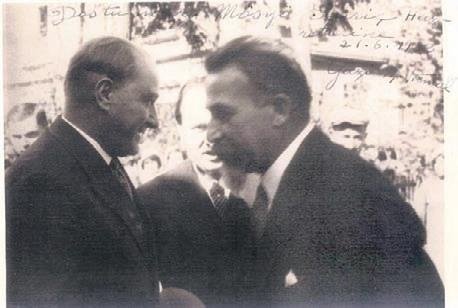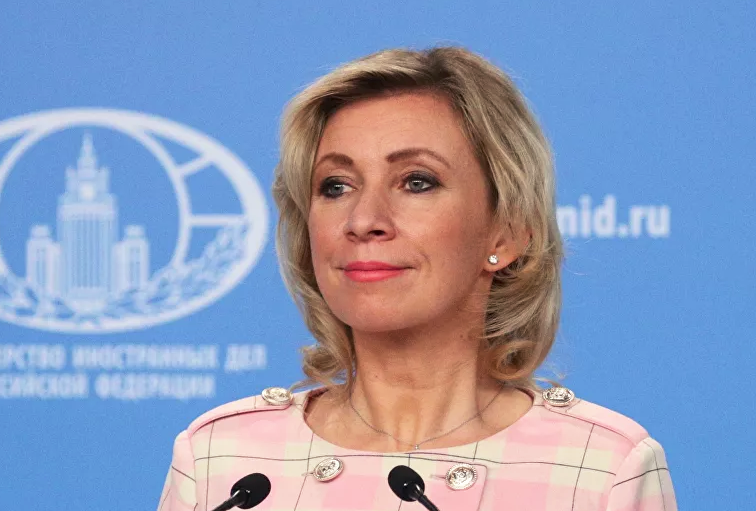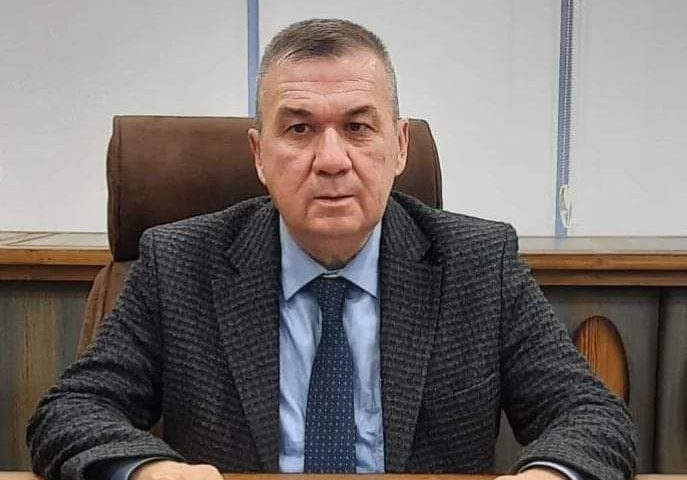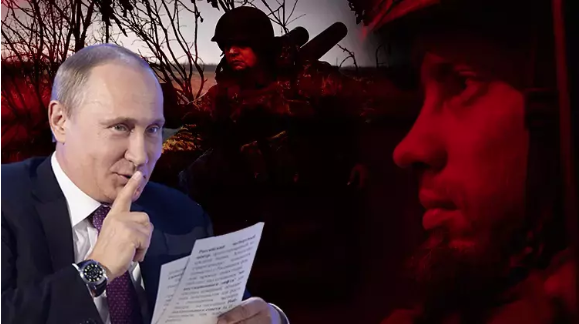One of the leading revolutionaries of the century, Lev Trotsky was a leading figure in the Bolshevik Revolution in Russia. However, as a result of the power struggle with the rise of Stalin, Trotsky became a victim of internal party disputes and had to be sent into exile. An interesting stop of this exile life was Istanbul. Trotsky’s Istanbul days witnessed very important memories from both a personal and historical perspective.
Trotsky’s first stop after his exile from the Soviet Union in 1929 was Turkey. Trotsky, who clashed with the oppressive regime of Soviet leader Stalin, first settled in Gümüşlük in Bodrum, Turkey. However, he later moved to Istanbul. Trotsky lived in neighborhoods such as Kadıköy and Büyükada in Istanbul. Throughout his exile, he continued to pursue both his personal thoughts and his revolutionary ideals.
Trotsky’s Istanbul days coincide with a period that marked both his personal life and world history. Trotsky’s presence in Istanbul was a source of concern for both the West and the Soviet Union, especially in the shadow of major historical events such as the beginning of the Cold War and the clash between communism and capitalism. Trotsky’s presence in Istanbul was a factor affecting the geopolitical equations in which Turkey was involved.
During his Istanbul days, Trotsky continued his intellectual activities despite his exile. He wrote articles, made political analyses and defended communist ideals. In this process, he also interacted with Turkish intellectual circles and shared his thoughts. At the same time, Trotsky showed interest in Turkish revolutionary movements and leftist politics.
Unfortunately, Trotsky’s Istanbul days did not last long. In 1940, Trotsky left Istanbul for Mexico. After a short period in exile in Mexico, Trotsky was assassinated by Stalin in 1940.
Trotsky’s Istanbul days are an important memoir that tells both a personal story and a historical period. Filled with his life in exile, his revolutionary ideals and thoughts, these days offer an important window to understand both his own life story and the world politics of that period. Even today, Trotsky’s days in Istanbul continue to be discussed and researched in historical and intellectual circles.
Places he lived in Istanbul
Lev Trotsky stayed in different neighborhoods and islands during his exile in Istanbul. Here are some of the places Trotsky stayed in Istanbul:
Kadıköy: Trotsky’s first stop in Istanbul was Kadıköy. This period of exile in Kadıköy started when Trotsky came to Turkey in 1929.
Büyükada: Trotsky’s most famous place of exile in Istanbul was Büyükada. From 1929 to 1933, Trotsky and his family lived in Büyükada. His house in Büyükada is also known as the Trotsky Museum and is still open to visitors today.
Beşiktas: After his exile in Büyükada, Trotsky moved to the Beşiktaş neighborhood. During this period in Beşiktaş, he continued his revolutionary activities.
Sisli: Trotsky’s next place of exile after Beşiktaş was Şişli. During this period, he continued his intellectual activities and wrote his articles.
These places where Trotsky stayed in Istanbul are both a part of his exile life and places of historical importance. Especially his house in Büyükada attracts attention even today as an important place bearing the traces of revolutionary thoughts and history.
Trotsky’s first residence was the Soviet Consulate in Istanbul. Meanwhile, the world press was running headlines like “Trotsky in Istanbul”. The local press was also very interested. Trotsky’s first interview was as follows:
“I have long admired the Turkish revolution. I even helped the Turkish revolution at that time, as your honorable leader knows. I praised Turks so much in my writings that they called me a Turkophile. At that time there were many people in Russia who were against Turks. Later, I also showed my Turkish friendship during the Turkish national war. I followed Turkey’s war of independence with great interest and was proud of its outcome.”
While waiting for an answer to his application for asylum in Germany, he was secretly taken to the Tokatlıyan Hotel by the Turkish police when the USSR administration was disturbed by his statements to the press. In the meantime, he had earned some money for his interviews with newspapers. He then moved to an apartment in Bomonti. However, when the neighbors were disturbed by the army of journalists and police officers who never left the doorstep, he moved to the Arap İzzet Paşa Mansion on Büyük Ada, thinking that it would be easier to be monitored by the police. It was in this mansion that he wrote his work The Russian Revolution and his biography My Life. The mansion was first thought to be the result of arson by Stalin’s men, but as it was later understood, the fire started from a water heater left on by his wife Natalya, and Trotsky’s documents, books and manuscripts were burned to ashes.
After staying at the Savoy Hotel for three months following the burning of the Arap İzzet Pasha Mansion, they moved to the mansion of lawyer Hasan Fehmi Bey on Moda-Sifa Street in April.
When Trotsky settled in Moda, he became interested in land hunting. He went quail and rabbit hunting in Samandıra. During one such hunting party, he was stranded in a village near Şile due to bad weather and spent the night with his entourage in the house of the village imam. In the five years he spent in Istanbul, Trotsky rarely went into the city, but on one of these occasions he saw Charlie Chaplin’s film City Lights in Taksim. He visited Suleymaniye, Hagia Sophia, Beyazit and Yavuz Sultan Selim Mosque and the Belgrade forests.
The family then returned to their beloved Büyükada and rented the Yanaros Mansion at number 4, Hamlacı Street. Trotsky had bought a boat in Buyukada and spent the time he had left from his writing work fishing.

Turkey-USSR relations and growing fears
On the surface, his life was idyllic, but disturbing events were taking place in the background. First of all, there had been widespread communist arrests in Turkey in 1929. On December 12, 1929, Soviet Deputy Foreign Commissioner Karahan came to Turkey to keep Turkey under close watch. The reason for the visit was the renewal and extension of the 1925 Turkish-Soviet Friendship and Non-Aggression Pact, which was to expire on December 17, 1929. Karahan was welcomed with the International Anthem on December 13, 1929. On December 16, 1929, he was received by Mustafa Kemal and the agreement was renewed.
On February 20, 1932, Trotsky was stripped of his USSR citizenship, and while living in Turkey he could not get over the fear that he would be killed by Stalin’s men.
On April 25, 1932, he traveled to the USSR with a large delegation consisting of Prime Minister İsmet Bey, Deputy Foreign Minister Tevfik Rüştü (Aras), CHF General Secretary Recep (Peker), Uşak Sugar Factory Director Remzi (Gürses), Istanbul Deputy Alaaddin Cemil, Economy Ministry Chief of Staff Ahmet Şerif (Önay), Head of the National Education and Training Department İhsan (Sungu), some experts, diplomats and bureaucrats. The trip had three main objectives for Turkey. The first was to get the USSR’s opinion and reassure it about Turkey’s membership in the League of Nations and the organization of the Balkan Pact, which Mustafa Kemal had long envisioned. The second was to improve trade relations between the two countries. And thirdly, to see if it was possible to develop common strategies against the world war, the footsteps of which were beginning to be heard. I don’t know if Trotsky’s deportation was discussed.
On top of these comings and goings, on January 5, 1933, Trotsky’s daughter from his first marriage, Zina, committed suicide in Berlin and he finally left Istanbul on July 17, 1933 on the Italian ship Bulgaria.
If you are curious about what happened after that, you can listen to my radio program that I have linked to.
What about the mansions that were not “Trotsky’s House” but his tenants?
The first mansion in Büyükada, which many people today know as “Trotsky’s House” and which is saddening to see because it is in ruins today, was built in the 1870s by Konstantin İlyasko, one of the Galata bankers, and was bought by Arab İzzet Pasha, one of the close circle of Abdülhamit II, in the early 20th century. Ilyasko Mansion was set on fire in February 1931, the second floor of the mansion was completely burned down.
The article on İlyasko Mansion in the Istanbul Encyclopedia published in 1994/1995 was written by Baha Tanman, one of the experts in the field. According to Tanman, the mansion was sold to a construction company in 1976 by İzzet Pasha’s heirs, and a new building of the same size and appearance was built in its place in 1979. Therefore, this ruin belongs to the second building. Meanwhile, the Yanaros Mansion in Büyükada is also in ruins.





